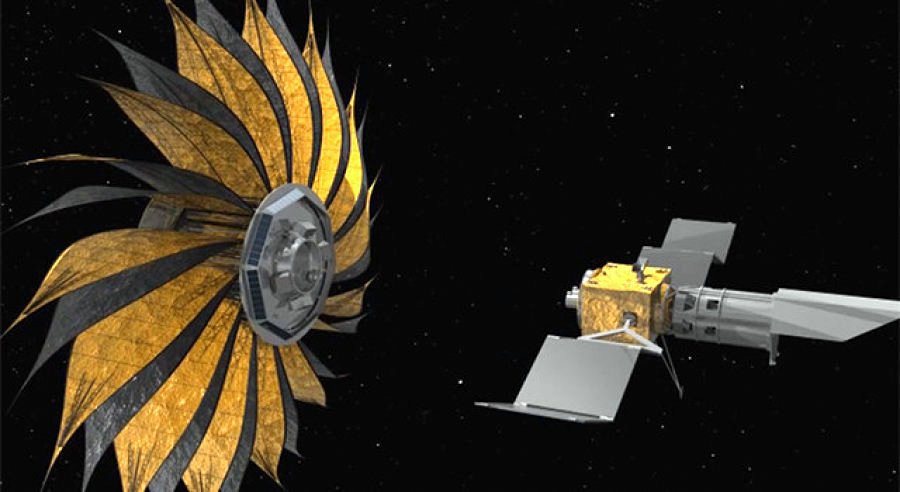I mean seriously what do these engineers & scientists at NASA are made of ? I know they’re made of atoms but still.. I mean how do they come up with such awesome cool stuff every time !
This time, it’s something you would not have even thought of. Yea… we are talking about NASA’s Starshade mission! (watch the video below)
The project, also referred as New Worlds Mission comprises of sending a large occulter in space to block the sunlight of nearby stars(bright stars like sun) in order to observe other exoplanets(planets that orbit star other than Sun) & their orbits. The deployable structure called the Starshade is being developed by NASA’s JPL (JET PROPULSION LABORATORY) in Pasadena, California.
The hunt is on for planets that resemble Earth in size, composition and temperature. Rocky planets with just the right temperature for liquid water — not too hot, not too cold — could be possible home for life outside our solar system.
Picking out the dim light of a planet from a star billions of times brighter is similar to finding a needle in a desert.
In order to achieve this feat, researchers are developing techniques to block out the starlight while preserving the light emitted by the planet. This is called starlight suppression.With the starlight supressed, astronomers would be able to take actual pictures of the planets. Unlike the other space instruments, it’s one part is the starshade which will block the light while the other one – the space telescope will capture photos.
Jeremy Kasdin, a reseacher in Princeton is the principal investigator of the Starshade project.
“Our current task is figuring out how to unfurl the starshade in space so that all the petals end up in the right place, with millimeter accuracy,” said Kasdin.

The flower-shaped petals are part of what makes the starshade so effective. “The shape of the petals, when seen from far away, creates a softer edge that causes less bending of light waves,” said Dr. Stuart Shaklan, JPL’s lead engineer on the starshade project. “Less light bending means that the starshade shadow is very dark, so the telescope can take images of the planets without being overwhelmed by starlight .”
“One of the starshade’s strengths is simplicity. Light from the star never reaches the telescope because it’s blocked by the starshade, which allows the telescope system to be simpler.” said Kasdin. The starshade has thrusters that will allow it to move around in order to block the light from different stars.
Fact:-
The starshade idea isn’t new: Lyman Spitzer, the Princeton University astronomer who lobbied for the creation of what became the Hubble Space Telescope back in the 1960s and 1970s, also suggested using such a screen in a 1962 paper. But it wasn’t until recent years that technological advances made it feasible to build one and operate it in space according to the extremely precise specifications necessary.
A video showing complete animation of the Starshade splitting of with the telescope & then moving to a position to block the sunlight !
NASA’s starshade team of engineers strongly believe that this mission is gonna be a huge success & it will lead to major exoplanet discoveries in the future.
Kasdin ends up by saying,
We’ll be able to show people a picture of a dot and explain that that’s another Earth.
source:- planetquest.jpl.nasa.gov

